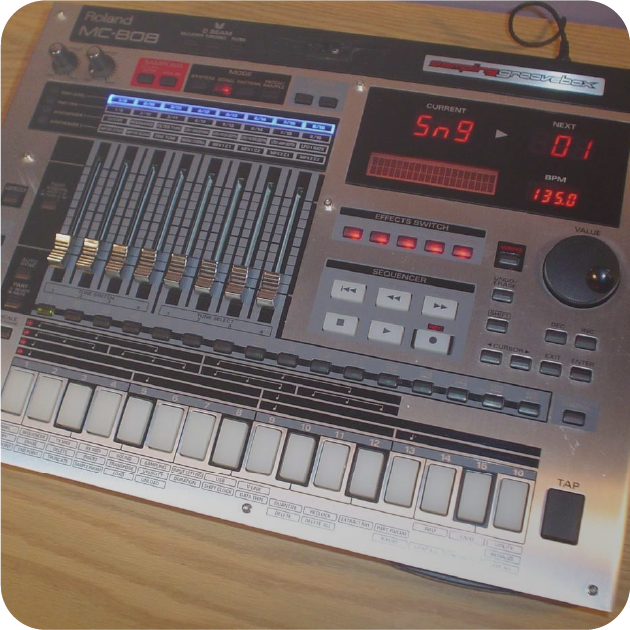Some Insane Tips for Mixing With Drum Samples
The drum sounds in your mix are weak, thin, and lifeless? Learn how to give them an extra lift by tweaking drum samples to get the perfect drum mix that will sound more powerful.
Mixing is one of the most essential aspects of sound production. When producing a song, it’s best to get your mix right early so you don’t have to spend hours tweaking it later. The process starts with choosing drum samples and then arranging them to work together well for the type of track you want to make. For example, if you are making a hip-hop beat, drums should be heavy and sharp sounding, while if you are making an electronic dance song, drums should be more mellow and soft-sounding.
Today, we will cover all the tips for mixing with drum samples related to the art of mixing in production music. We’ll explore why using these sounds is effective, what types of tones work best in different contexts, and also offer some tips on how you might go about finding those perfect drum sounds.
What Is a Drum Sample?
Drums are the heartbeat of any song. With a single drumbeat, you can create a cheerful or intense atmosphere. Drum samples are drum sounds pre-recorded; they can be modified for music production.
Tips for Mixing With Drum Samples:
Knowing What You Want and Sample Selection:
The first place to start is choosing a drum sample that will sit well in the mix. Every type of sound has its tone and feel, and drums are no exception. With these sounds, there are two stages: Knowing what you want and sample selection.
Knowing how you want your track to come together before choosing sounds will help keep things organized and keep you on track. Mixing with drum samples is much easier if you know what sound you’re going for, so it’s best to plan slightly. What type of genre? How many sounds do I want? What kind of mood are they going to create in the overall mix? The answers will make your job easier and help you pick suitable drum samples.
Different genres have different approaches to mixing, so knowing what sort of music you want to make can be helpful. For example, in a more basic hip-hop song, it is common for producers to use only one or two sounds per kit (for example, kick drums).
Choosing a drum sample is essential, so make the right choice. You can tweak it, but you must be sure about the quality. Even if you don’t find the perfect drum sample, you can choose another sample and layer them together.
Sometimes, using multiple samples in a mix can cause phase problems, and the more samples used, the higher the chance of muddying up the sound quality. To avoid these issues with your audio setup, it’s best to stick with two or three sample slots at most.
Tune Your Drum Samples:
A kick drum sample that perfectly fits the beat and is pleasing to listen to is key if you want your mix to sound clean. Mixing with drum samples can be tricky, especially at first, but it does get easier with practice. An excellent way to start bad-sounding drums (like muffled or low sounds) is by using an equalizer to tune the overall sound.
If you want that kick to be a little crisper, try using an equalizer or mixing with compression to boost its level and bring out the high frequencies of your sample. If you like the sound of your drum but wish it was louder, you can use a compressor to bring out its loudness without affecting the overall pitch. Use your ears to guide you when utilizing these tools.
Most drum designer software offers pitch adjustment controls that can be tweaked in the plug-in window. If you’re working with pre-recorded samples, most DAWs include a pitch-shifting plug-in used by experts and beginners alike for altering the sound of their sample without any hassle.
Eq Your Drums and Carve Out Spaces:
Drum samples can sound great in isolation but often clash with each other. Start by making space between your layered drum sounds to avoid these clashes. For instance, if you’ve got a kick for low-end – try using high pass filters on the punchy sample so that it doesn’t interfere with the lows of your bass-heavy one!
Next, find the perfect drum tone for your mix. For example, if you want to make room in your low mids on a kick drum, but they’re clashing with the bottom of some snares, try carving out that space and removing it from one of those sounds instead!
After all, this is done by taking an EQ approach to other instruments sounding too loud or not balancing well together. If there’s something important, like a bass line needing more presence while another instrument needs less, then use subtractive EQ – after listening closely and tweaking until it feels right!
When all the drum samples sound cohesive, you can enhance the part you like the most. Try using Bassroom to emphasize the low end of the kick drum.
Mixing high frequencies, like hi-hats or cymbals, with shallow sounds can distort if your EQs are too high. Mixing with drum samples is about finding that sweet spot where each element sits well while still sounding good.
Enhance Dynamics and Add Glue:
Dynamic processors are good tools for shaping the character and color of drum samples.
Mixing with drum samples is all about finding that balance in the amount of dynamics processors you use so you don’t over-compress your drums—which will result in them sounding squashed and lifeless.
By gluing samples together, bus compression techniques can give your tracks a clean, cohesive sound. Parallel compression is a method to flatten the drum tracks and make them feel like they are all from the same drum kit.
A compression technique like side-chain compression is used to duck the bass to make space for a kick drum.
Mixing With Reverb to Create Depth and Ambience Effect:
You will need to send your drums to an effects bus to give it a depth effect like it’s coming from a room. One way you can do this is by sending each track individually into the effect and adjusting the levels of each drum inside that space.
Send your sub-kick samples to the reverb bus and then add reverb and tweak it according to your taste. When you’re using only a single low-end sound, it’s essential to place an EQ before the plug-in and roll off some high-end. This will ensure that your drums are still clear of any significant effects! Add reverb for more organic-sounding drums!
Add Bus Effects:
Bus effects are like an added flavor for your drum mix. They give the listener something extra and make the drum mix stand out. Adding harmonic distortion to a bus with IGNITE is the best way to fatten up drums, make samples sound more cohesive, and help cut through the mix.
Stereo-widening effects are a great way to add extra flavor to the mix. You must ensure you don’t overdo it, or your song will be less than radio-ready. Keep an eye on the stereo field and levels before setting up for export!
Finding the right balance of drum samples when mixing can be challenging. This is why we’ve provided you with these tips on mixing with drum samples and making your music sound like a dream! With this knowledge, you should have no problem getting that perfect beat for any project.
FAQs:
What is a reverb bus?
A bus is a way to send multiple tracks into one reverb process. Once you set up the bus, route all the different sounds you want in the same space together and apply some subtle reverb effect. All of those separate sounds will seem like they exist side by side.
[hfe_template id=’202′]




